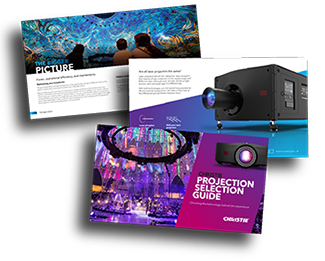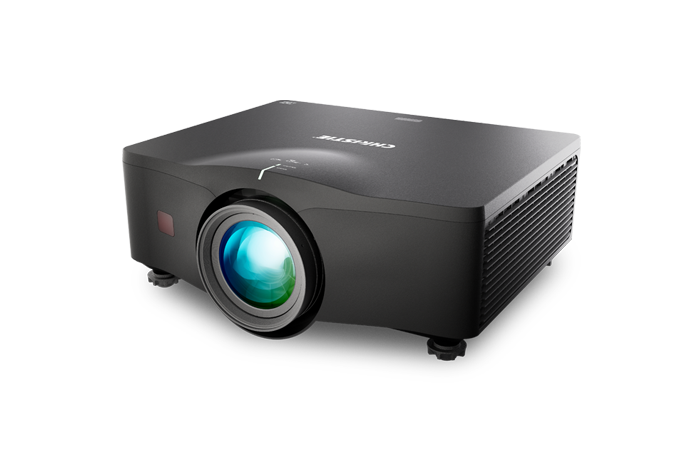Not sure where to start? Read our top tips for choosing your next projector
We know digital projectors.
At Christie, we help customers determine the best projection solution every day. Here are six tips to consider when you choose your next projector (and hint, the best choice is not always the biggest and brightest).
Want more tips, advice, and a deeper dive into today’s projection technology?
Check out our new Projector Selection Guide.
#1: There’s no one-size-fits-all projector
There are a lot of projection solutions out there to choose from, and it can be overwhelming.
Our advice is to start by considering your ‘must haves’. These include the budget, your space, the environment, and what you’re looking to achieve with the projector.
These answers will help guide you through the process of selecting the projector that best suits your needs.
#2: Size-up your venue
Let’s dig a little deeper and consider your venue. To help choose the right projector for your space, think about the following:
-
How much ambient light is in the space?
-
What will you project onto and how far will the projector be from this surface?
-
What size is your venue?
-
Are there any obstructions to the projector’s light path in the space?
-
And how far away from the projected image will the audience be?
Your answers will help you determine your specifications for brightness, resolution, lens type, and throw distance. These specs, in turn, will help establish how many projectors you’ll need, and where to place them.
#3: Managing more than one projector
After you evaluate your project and venue, you’ll have a sense of how many projectors you need. Configurations with more than one projector, often called a multi-projector array or system, have a few additional considerations including the size, shape, and type of screen or surface, and whether the projectors will be fixed in place or moveable.
Automated alignment software will ensure that the image your multi-projector array displays looks as intended, whether you’re projection mapping onto a building or moving the projectors for a live event.
Built-in warping and blending software, like Christie Twist™, aligns content across multiple projectors for a seamless image. Christie Mystique™, a camera-based software tool, automates the blending and warping process and saves hours of work with a few mouse clicks.
#4: Evaluate your content
What type of content will you project? Spreadsheets and presentations, colorful detailed visuals, or vibrant, dynamic video?
Color fidelity becomes more important as the sophistication of your content increases. A projector that boosts color performance will ensure colors look balanced, uniform, and accurate, and that the content looks true to life. RGB pure laser projectors display the widest color gamut available, and colors closest to what we can see.
There are a lot of projection solutions out there to choose from, and it can be overwhelming. Our advice is to start by considering your ‘must haves’. These include the budget, your space, the environment, and what you’re looking to achieve with the projector.
If your content includes video, consider the projector’s frame rate capabilities. Projectors with high frame rates of 60 Hz and above significantly reduce motion blur to maintain crisp, clear images.
#5: The price
We know that cost is a priority, but consider price as a starting point, not the finish line. Whether it’s a 1DLP® or 3DLP® projector, the total cost of ownership should factor into your decision. Energy efficiency, the quality of the projector, the maintenance schedule, the cost to replace consumables, like filters, and the lifespan of the light source can all impact the total cost.
Whatever your budget, there’s a projector that fits within it.
But does that projector meet the needs of your project?
The key is to find a projector that offers everything you’re looking for without spending more on unnecessary extras or spending too little and sacrificing benefits.
#6: The right projector isn’t always the biggest
To find the best solution, considering a manufacturer’s full range of projection options will help you find the most affordable and best-value option for your budget and ensure it’s the right projector for the job.
By taking the time to formulate what you want to achieve, the characteristics of your environment, your technical requirements, and research products on the market, you’ll find the right solution. Ultimately, the right projector is the one that’s right for your application – and budget.
 |
Want more tips, advice, and a deeper dive into today’s projection technology? Check out our new Projector Selection Guide. (You just need to add your email address to access the guide.) |






